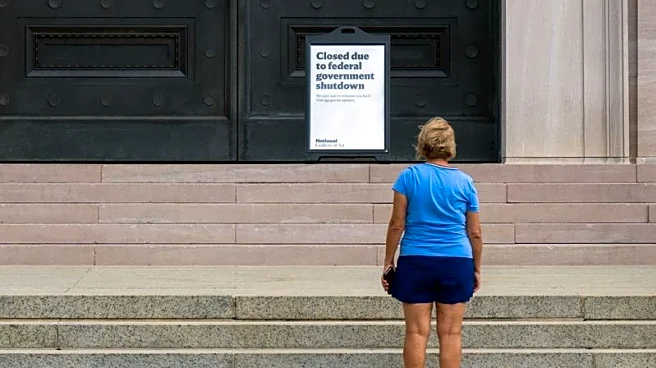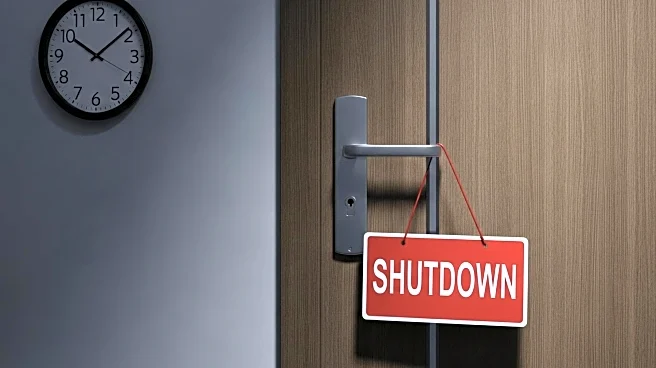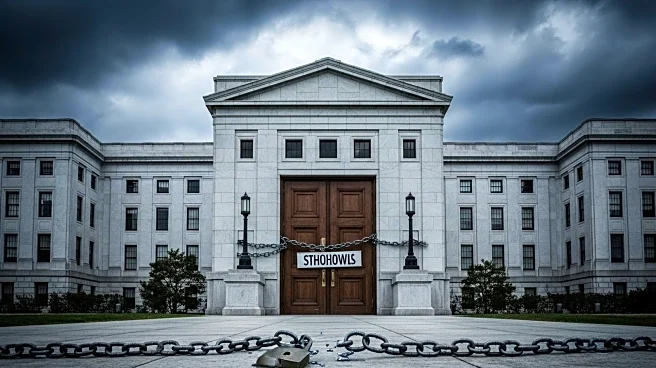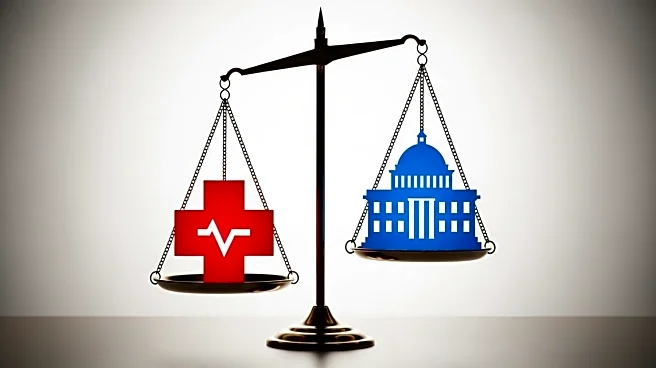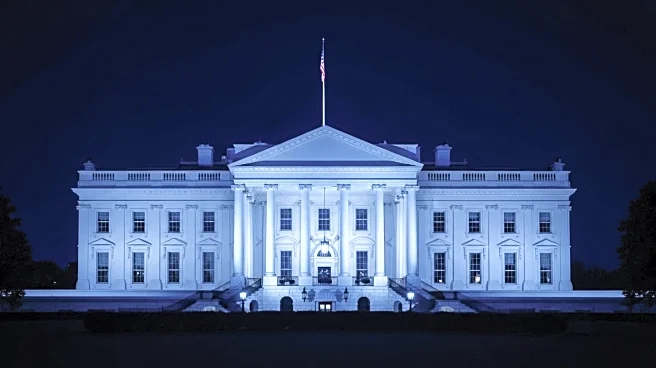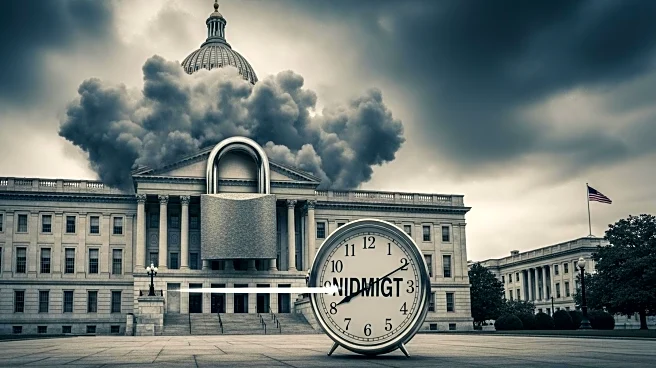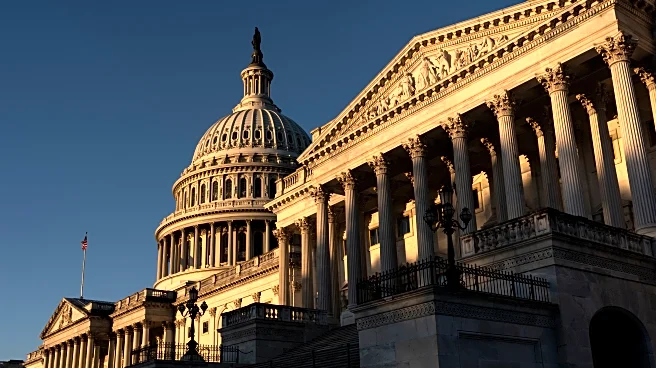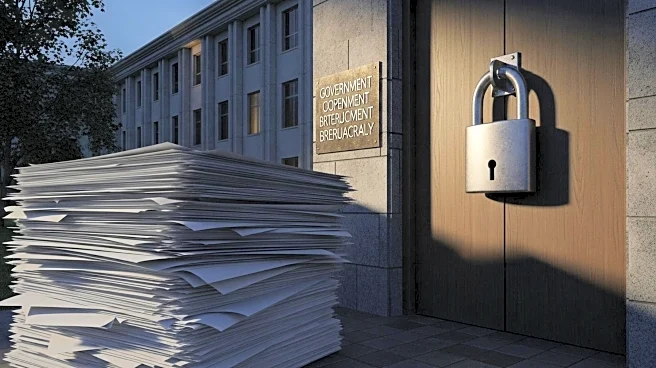What's Happening?
The federal government shutdown has entered its second week with no clear resolution in sight. The shutdown has resulted in the closure of Capitol tours and a halt in legislative activities, as the House remains closed and the Senate is unable to pass a plan to reopen the government. President Trump has threatened to terminate federal workers and deny them back pay. The core issue revolves around health care subsidies, with Democrats demanding the continuation of subsidies that were increased during the COVID-19 pandemic. These subsidies are set to expire at the end of the year, potentially leading to higher health insurance rates. While Republicans argue that the issue can be addressed later, Democrats insist on resolving it immediately. Behind the scenes, some bipartisan discussions are taking place, with President Trump indicating a willingness to negotiate, although he insists the government must reopen first.
Why It's Important?
The ongoing shutdown has significant implications for federal employees, who face the possibility of missing paychecks without the usual guarantee of back pay. The dispute over health care subsidies is a critical issue, as millions of Americans could see increased insurance costs if the subsidies expire. This situation highlights the broader political struggle between Republicans and Democrats, with each side trying to leverage the shutdown to gain political advantage. The outcome of this standoff could influence public opinion and voter behavior ahead of the 2026 midterm elections. The shutdown also underscores the challenges of bipartisan negotiation in a deeply divided Congress.
What's Next?
The Senate is expected to attempt another vote on a House-passed bill to fund the government, but it is likely to fail without a resolution on health care subsidies. Both parties are entrenched in their positions, with Democrats focusing on the potential health care crisis and Republicans emphasizing the economic impact of the shutdown. As the shutdown continues, pressure will mount on lawmakers to find a compromise, especially as federal employees face financial uncertainty. The situation remains fluid, with potential shifts in strategy as both parties assess their political standing and public support.

